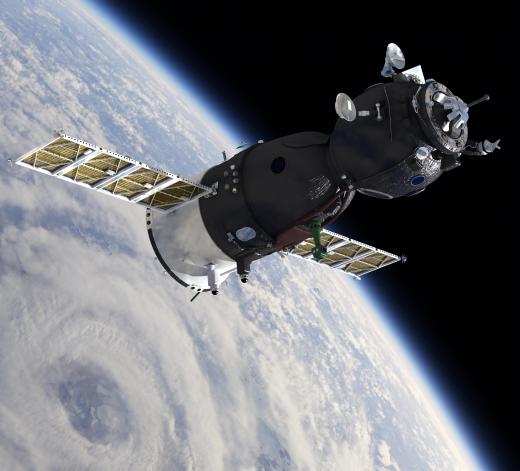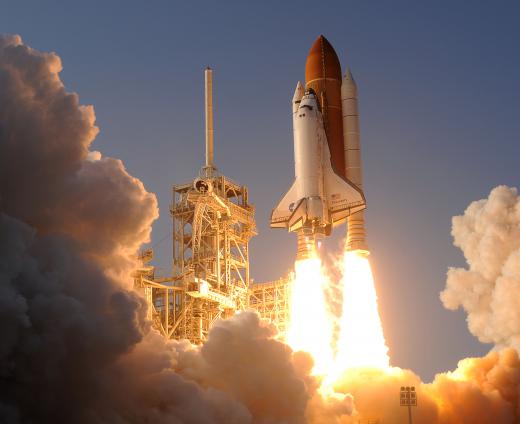What are Launch Costs?
 Michael Anissimov
Michael Anissimov
Launch costs refer to the cost of sending a payload from the ground to outer space, specifically low Earth orbit (LEO). Typical launch costs today are $10,000 US Dollars (USD) to $25,000 USD per kilogram ($4,500 to $11,000 USD per pound), though some countries subsidize space launches, occasionally reducing cost as low as $4,000 USD per kilogram ($1,800 USD per pound). For a typical five tonne communications satellite, this adds up to between $20 million USD and $125 million USD. For launching the Space Shuttle, which weighs about 2,000 tonnes, the cost is about $800 million USD, or nearly a billion dollars. Including other expenses, the total average cost per Space Shuttle flight is about $1.5 billion USD. Clearly, this makes activities in space expensive.
Launch costs have been pretty much the same since the earliest days of space exploration, mostly due to an unchanging underlying technology: chemical rockets. The costs for launching a chemical rocket have been reduced somewhat through innovation (private spaceflight) as well as equatorial launch services (such as Sea Launch). Launching a rocket from the equator can minimize the necessary fuel by taking advantage of the Earth's rotation, thereby lowering the launch costs by a significant margin. Launch costs can be reduced somewhat by using reusable launch vehicles, but the poor cost performance of the reuseable Space Shuttle has caused many to question this idea. There is a consensus that a real breakthrough in decreasing launch costs will require using some new method to get to space.

Since space travel began with the launch of Sputnik in 1957, scientists have been looking at ways to exploit some method other than chemical rocketry to reach space. It has been determined that a sufficiently long cannon could be used to launch acceleration-resistant payloads into space, but no country has yet tried to build one, though a few companies are trying. A similar concept, a launch loop, would accelerate a payload using powerful magnets to escape velocity, then launch it upwards. Such an approach would also require acceleration-resistant payloads, as the accelerations on the payload would be in the range of thousands of gravities.

Another proposed method of reducing launch costs is the construction of a space elevator, a concept which can received some funding and attention in the United States and Japan. A space elevator would consist of an extremely long carbon nanotube cable, with a counterweight in geosynchronous orbit. Though reaching orbit would still require expending the same amount of energy, it could be expended gradually rather than over the course of a few minutes, greatly expanding the number of options that could be used to get a payload to orbit.
AS FEATURED ON:
AS FEATURED ON:















Discussion Comments
Government inefficiency and excess regulation.
Why is it so expensive? Can anyone find a pie chart showing what part of this is so expensive? Expensive custom milled components. Fuel.
Post your comments